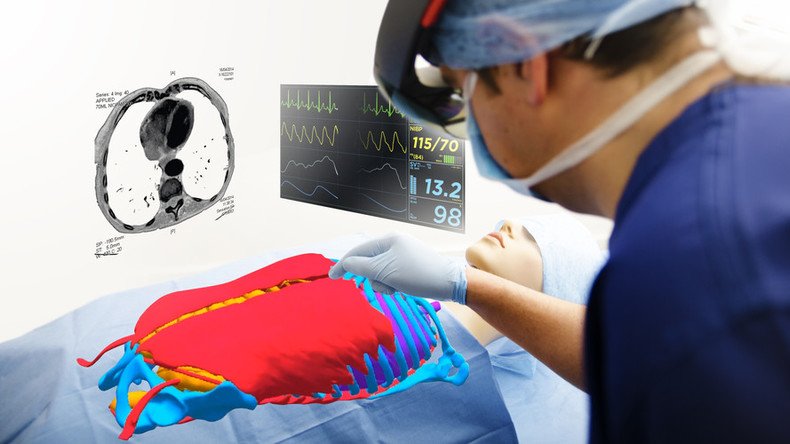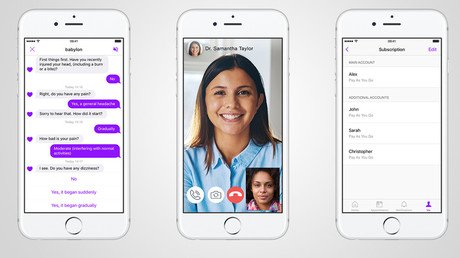’X-ray vision' surgeries could become reality with Microsoft's HoloLens headset

Surgeons could soon be operating using X-ray vision, according to a company which has developed technology allowing doctors to see inside patients in real-time. The innovation is made possible by Microsoft's HoloLens “mixed reality” headset.
Cambridge Consultants announced on Thursday that it has developed an augmented reality (AR) surgical system which allows doctors to see inside their patients while operating through "minimally invasive openings."
Minimally invasive surgery, also referred to as keyhole surgery, is performed through tiny incisions rather than one large opening.
The new system provides a "real-time 3D interactive perspective of the inside of the patient, accurately guiding the surgeon in ways not previously possible," the company said on its website.
The process is enabled by Microsoft's HoloLens headset, providing doctors with a virtual 3D map of the patient's body as they lie on the operating table.
The AR system uses MRI and CT scans to create a three-dimensional image with different automatically color-coded organs, according to New Scientist. The image is then plugged into the HoloLens headset.
Surgeons could tap on non-relevant organs, making them disappear, allowing them to pay focus on vital areas.
They could also make notes on virtual organs or other parts of the body before the operation, Simon Karger of Cambridge Consultants said, as cited by New Scientist.
"Having the correct information in the right place at the right time is essential for successful surgery, yet the operating theatre is typically a very busy environment with limited access to any type of real-time imaging," Cambridge Consultants said.
The system was tested using data from real people which was projected onto a surgical mannequin during simulated operations.
The company also noted that the system uses data visualization to give surgeons "easy access to patient’s records and operating information while they work."
While Cambridge Consultants admitted that "today's platforms still need to mature before they are ready for clinical deployment," the company expressed optimism that the technology "holds great promise for critical applications like surgery."
Meanwhile, Karger already has big plans for what the technology may look like years down the road, including the possibility of touch-sensitive tools which warn doctors when they get too close to a nerve.
He is aware, however, that the technology won't be used on actual patients anytime soon – despite believing it could be completely developed within just a few years.
"The world of surgery is quite a conservative one," he said, adding, that it could be decades before it is deemed safe enough to use in the operating theatre.
Cambridge Consultants isn't the only company to propose the idea of using HoloLens to assist surgeons. Earlier this month, surgical technology company Scopis explained a similar tactic for conducting spinal surgery.
The Microsoft HoloLens headset uses transparent lenses, spacial sound, and an understanding of the real-world environment to create holograms which look and sound like they're actually part of the user's world, thus creating a "mixed reality" experience. It is the world's first fully untethered, self-contained, holographic computer.














